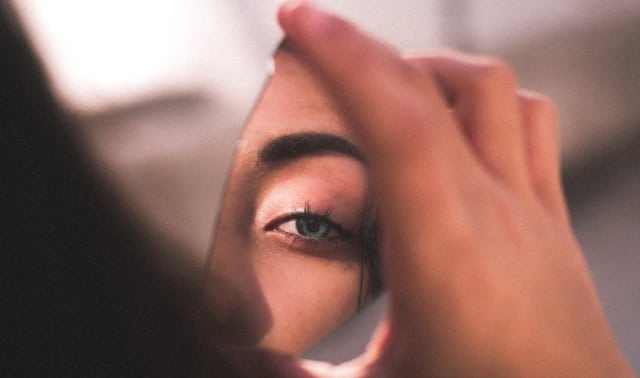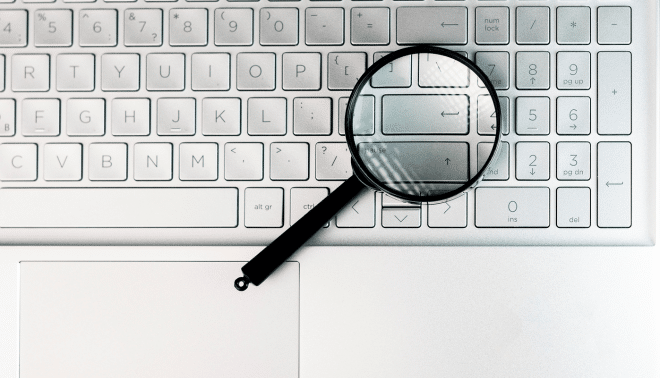Sign up for the Family Tree Newsletter! Plus, you’ll receive our 10 Essential Genealogy Research Forms PDF as a special thank you.
Get Your Free Genealogy Forms
"*" indicates required fields

Q: My parents are deceased, so I asked my mom’s brother Jared to take an autosomal DNA test. I discovered that he shares DNA with his third cousin Susan, but Susan isn’t on my match list. How is that possible, given that I share all of Uncle Jared’s ancestors?
A: It’s a common misconception that close relatives should share all the same genetic matches. Close relatives don’t always share the same DNA, and thus won’t always share genetic matches. In order for you to share DNA with your cousin Susan, two requirements must be met:
1. You and Susan both must have inherited one or more segments of DNA from the same ancestor. The likelihood of inheriting a segment of DNA from an ancestor decreases with each generation separating the test-taker and the ancestor. For example, a parent doesn’t pass down all his or her DNA to the next generation. Instead, you inherit just 50 percent of your father’s DNA and 50 percent of your mother’s DNA. Half of each parent’s DNA isn’t passed down to you. Therefore, you receive just 25 percent of each grandparent’s DNA on average. The chart below shows approximately how much of your DNA comes from an ancestor of each generation. With each generation, you inherit less DNA from an ancestor until at a certain point—approximately seven generations—you receive DNA from only some of the ancestors in every generation.
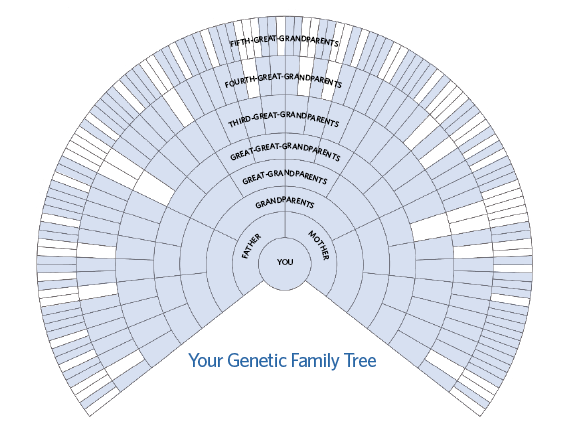
As a result, everyone has two family trees: The first is your genealogical tree, which is every ancestor in history that had a child who had a child who had a child who ultimately led to you. We are each the product of every decision made by every person in our genealogical family tree.
ADVERTISEMENT
2. The second is the genetic family tree, which is made up only of those ancestors who gave you DNA. Because you only inherited DNA from some of your genealogical ancestors after about the seventh generation, only some of your genealogical ancestors are in your genetic family tree. In the genetic family tree shown at left, for example, ancestors who contributed DNA are shaded. The ancestors in white, while still genealogical ancestors, aren’t genetic ancestors. At each generation, the proportion of genetic ancestors to genealogical ancestors decreases. The likelihood of inheriting a segment of DNA from a particular genealogical ancestor decreases with each generation.
Although siblings have the same genealogical tree, they’ll have different genetic trees (unless they’re identical twins). Similarly, you have a different genetic tree from each parent, although your genetic family tree is a subset of your parent’s genetic family tree.
In your case, it’s almost guaranteed that both you and Susan inherited DNA from your shared ancestors—fulfilling our first requirement above—because those ancestors are too recent to begin “falling off” your genetic family tree. The second requirement, however, still must be met for Susan to show up as your genetic match.
ADVERTISEMENT
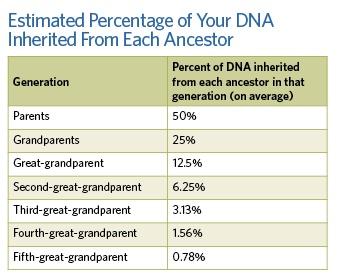
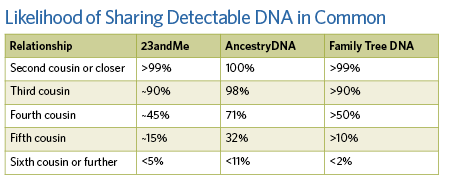
2. You and Susan must inherit at least one of the same segments of DNA from a shared ancestor to be identified as genetic cousins in a DNA test. For example, you might’ve both inherited DNA from your fourth-great-grandfather, but each of you received a different part of his DNA. As you can see in the table above, which shows each testing company’s estimated likelihood of inheriting the same DNA, the chances of sharing a detectable segment of DNA with a cousin drops drastically after the third cousin level. So there’s a 90 to 98 percent chance your uncle Jared will share a DNA segment with his third cousin Susan, and a smaller chance that you’ll share a DNA segment with Susan (your third cousin once removed). Your chance of sharing DNA with Susan is halfway between third cousins and fourth cousins (45 to 71 percent).
It appears that your uncle Jared and your cousin Susan inherited at least one of the same segments of DNA from the same ancestor. In contrast, you and Susan didn’t inherit the same segment, even though you both likely inherited DNA from your shared ancestors. As long as your results show that your uncle Jared is actually your uncle, the fact that he shares DNA with his third cousin Susan, while you do not, isn’t surprising.
Related Reads
ADVERTISEMENT

